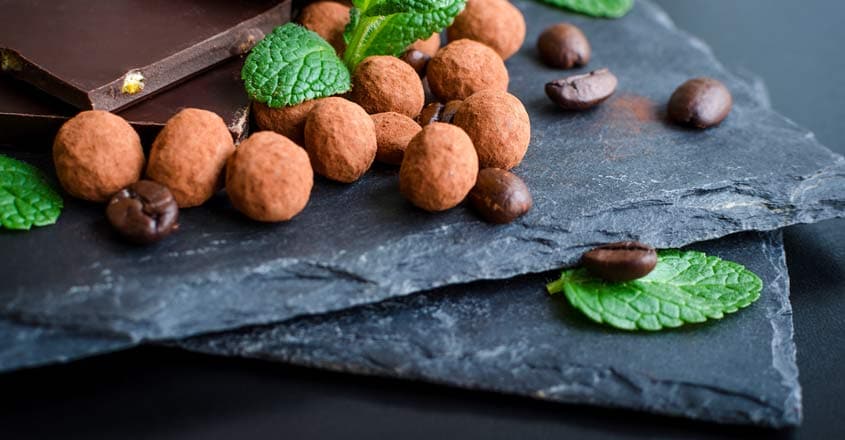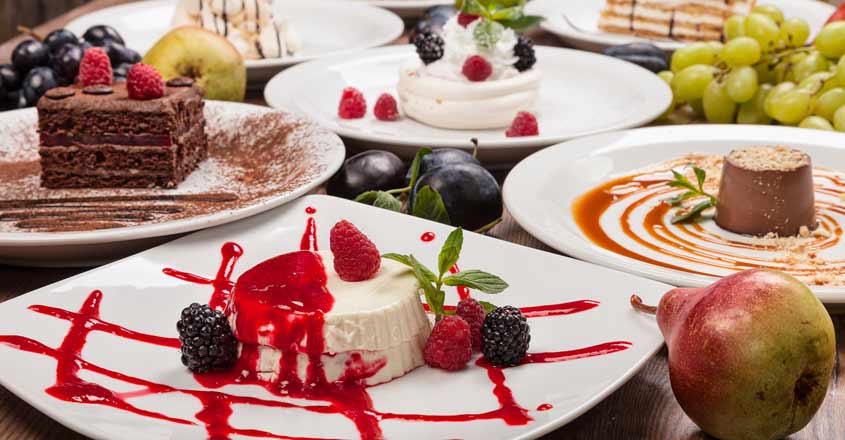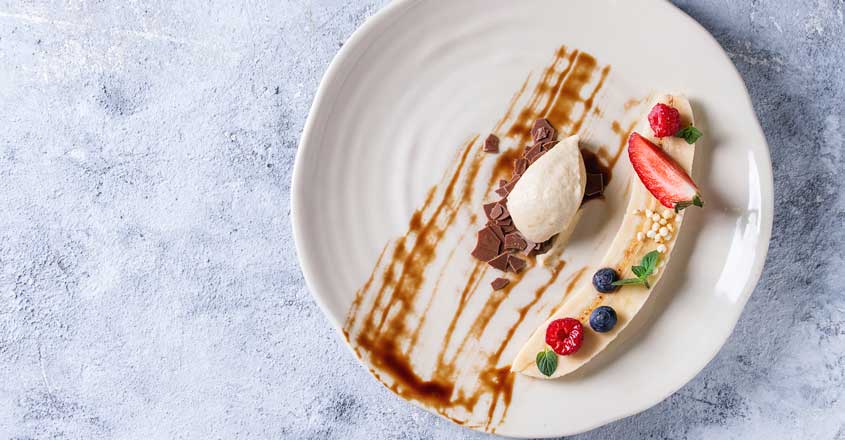How to nail the art of plating

Mail This Article
Winning a gourmet's heart can't be done alone with taste. The art of presenting a dish is as important as making it tasty to win the guests over.
Plating food is considered a form of art across the world and the French take great pride in it. They are considered as one of the pioneers in it. Each Chef has their own style and comfort in plating food to make the appetizers look delicious so make sure you know the skill well too.
Here are some tips to slay the game of plating:
Plate
Choice of the plate is determined by the kind of dish we are plating. Everything from the colour, texture, ethnicity, size, shape needs to be considered before selection. Some chefs prefer dark plates to present colourful and bright dishes while some choose white or light coloured ones. Food is also presented on slates, stone or carved plates, it gives a rustic feel to the dish. The only unbreakable rule is that warm plates for hot food and chilled plated for cold.
Sauce

This component not only enhances the flavour and taste of the dish, it also gives an opportunity to improve appearance. Most preferred is a smooth and fine texture with a thick consistency to be spread in different styles on the plate. It is usually a spread while the other components are placed, but there could be more than one sauce used on a plate. A light drizzle or dash of sauce at the end, just before service also helps.
Main meal

This is the lead singer in the orchestra with whom each component has to resonate with. It could be a protein or carb portion depending on what the dish is. There are principally two schools of thought which exist on its position.
One traditional approach teaches us to place it right in the centre of the plate and the rest of the components sprinkled around it. While the modern approach speaks about distributing the mains as smaller pieces in a line or arc or random position but keeping in mind that each piece is treated with equal attention as the central one in the traditional approach. The modern approach is more time consuming but brings out the skill of the chef.

Accompaniment/sides
This component completes the meal and gives the chef a chance to provide different texture and color to the dish. The quality has to be adequate enough to be visible on the plate and at the same time not enough to steal the show of the Main meal component. It could be a salad, salsa, vegetable or starch which compliments the meal and adds value to the plate.
Garnish

This adds the last sparkle and concludes the plating process. It could be an artistically hand crafted edible mini item or could just be a sprig of fresh herb or micro greens, something that adds a dash of freshness on the plate. It could be the simplest part of the plate but remember this is the first component the diner lays his eyes on before eating.
(With inputs from Chef Sudhir Nair, Executive Chef at Courtyard by Marriott, Bengaluru and Kasiviswanathan Muthuraman, Executive Chef of Radisson Blu Atria, Bengaluru)


